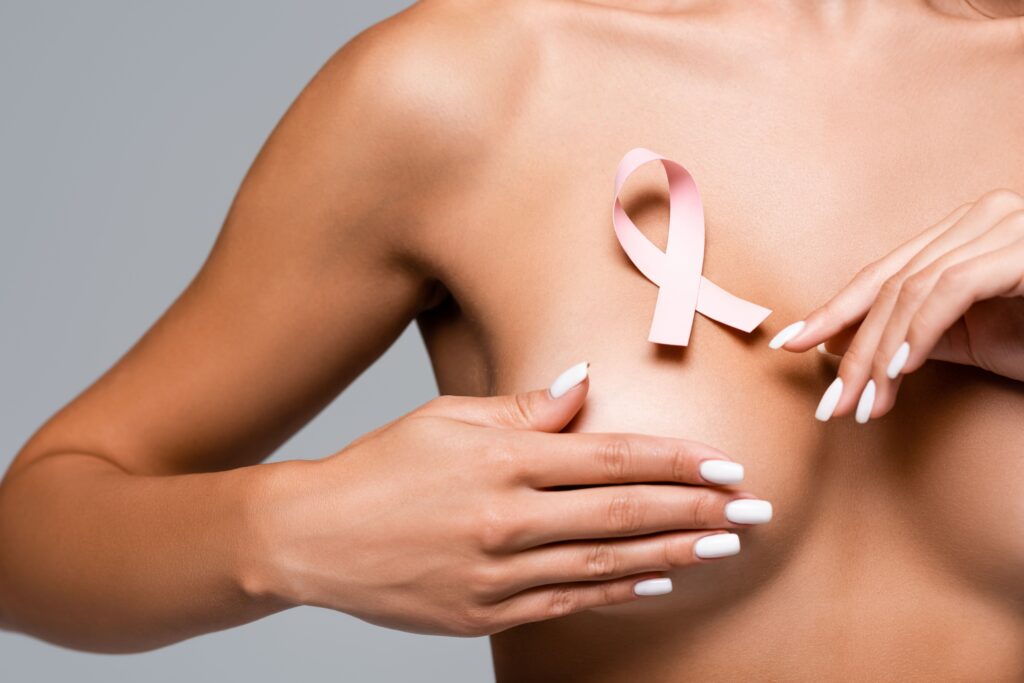Except for skin cancer, breast cancer is the most common cancer in women in the United States and women are being affected at increasingly younger ages. The search for solutions to this common form of cancer is a public health priority. Let’s take a look at what is new and what has changed in breast cancer diagnosis and treatment in recent years.
What Causes Breast Cancer?
Finding a cure for breast cancer starts with identifying the causes and contributing factors. The main contributors include:
- Genetics
About 5–10% of all occurrences of breast cancer are related to genetics. While only 0.25% of people carry the BRCA1 or BRCA2 gene, if you are among these individuals, you have a 60% risk.
- Lifestyle Habits
Certain lifestyle habits and choices play a considerable part in increasing or decreasing the risk for breast cancer. Those that increase risk include daily alcohol consumption, being overweight or obese, being sedentary, and eating a high-saturated fat diet. Also, women who delay their first pregnancy to 35 or older have an increased risk.
- Environmental Chemicals
Air pollutants, chemicals in personal care products, plastics, and other environmental chemicals are known risk factors. Some of these chemicals mimic estrogen in the body. Research into the role of environmental factors in breast cancer has been increasing in recent years.
How to Check for Breast Cancer
Detecting cancer early gives you the best odds of beating it. The National Breast Cancer Foundation recommends performing a breast self-exam once a month. Women 50–74 years old should also have a mammogram every two years. And those at high risk should have a breast MRI along with their mammogram.
Notably, new imaging methods are being developed that may improve accuracy and reduce radiation exposure. One of these is a faster MRI technique. Several new and experimental techniques use radioactive tracers injected into the blood. In PET scans, a radioactive sugar is used to locate cancer cells, which consume sugar at a more rapid rate than healthy cells.
Another new test uses contrast dye combined with a mammogram. This makes it easier to evaluate areas that appear abnormal on a regular mammogram.
And several new tests are radiation-free. In a new type of ultrasound, called elastography, the breast is gently compressed. This helps show up cancer, since tumors are generally denser than healthy tissue. A new optical imaging technique shines light through the breast and may be combined with MRI and other types of tests. And a test for detecting the electricity conducted by tumor cells is being developed. This test is based on the differences between the way cancer cells and normal cells conduct electricity.
What Does Breast Cancer Look Like?
On a breast self-exam cancer might appear as a new lump or bump under the surface or as changes to the skin. The skin may appear red, dry, and scaly, dimpled, or swollen. Also, the nipple may become retracted and the surrounding lymph nodes may be enlarged.
When looking at a mammogram, a doctor will look for several telltale signs that may indicate cancer. A tumor will often have a defined shape and distinct boundaries. Tiny white calcium deposits might also show on X-ray. Sometimes their appearance and pattern can raise suspicion of cancer.
On PET scan, cancer appears as dark/black areas while healthy tissue appears as shades of gray.
Additionally, ultrasound can distinguish between a cyst (darker in color) and a tumor (lighter in color).
Why Is Breast Cancer Affecting More Younger Women?
Rates of cancer, in general, have been increasing among younger people in recent decades. Adding to this concerning trend in terms of breast cancer is that when younger women are diagnosed the majority are already at advanced stages. Younger breast cancer patients are also more likely to have aggressive types of cancer than their older counterparts. And the majority of these women don’t have genetic risk factors.
So, what accounts for the increase in aggressive cancers at younger ages? There are several possible underlying causes. Current screening recommendations don’t recommend screening women younger than 40 who don’t have identifiable risk factors. Moreover, mammography is less sensitive in younger women. As a result, their cancers progress further before they are detected.
Interestingly, concerning lifestyle habits, obesity doesn’t seem to be a factor, as most younger women with breast cancer have normal or low BMI. However, healthy exercise and diet are equally protective as in older women. Another possible explanation is that more women are delaying their first pregnancy.
Finally, the levels of endocrine-disrupting chemicals in the environment have been increasing. Exposure to these chemicals in early life may increase risk.
While having genetic risk factors dramatically increases your chances for breast cancer, most instances aren’t genetically based. Having a healthy lifestyle, minimizing exposure to certain environmental toxins, and getting screened regularly may significantly decrease your risk.



